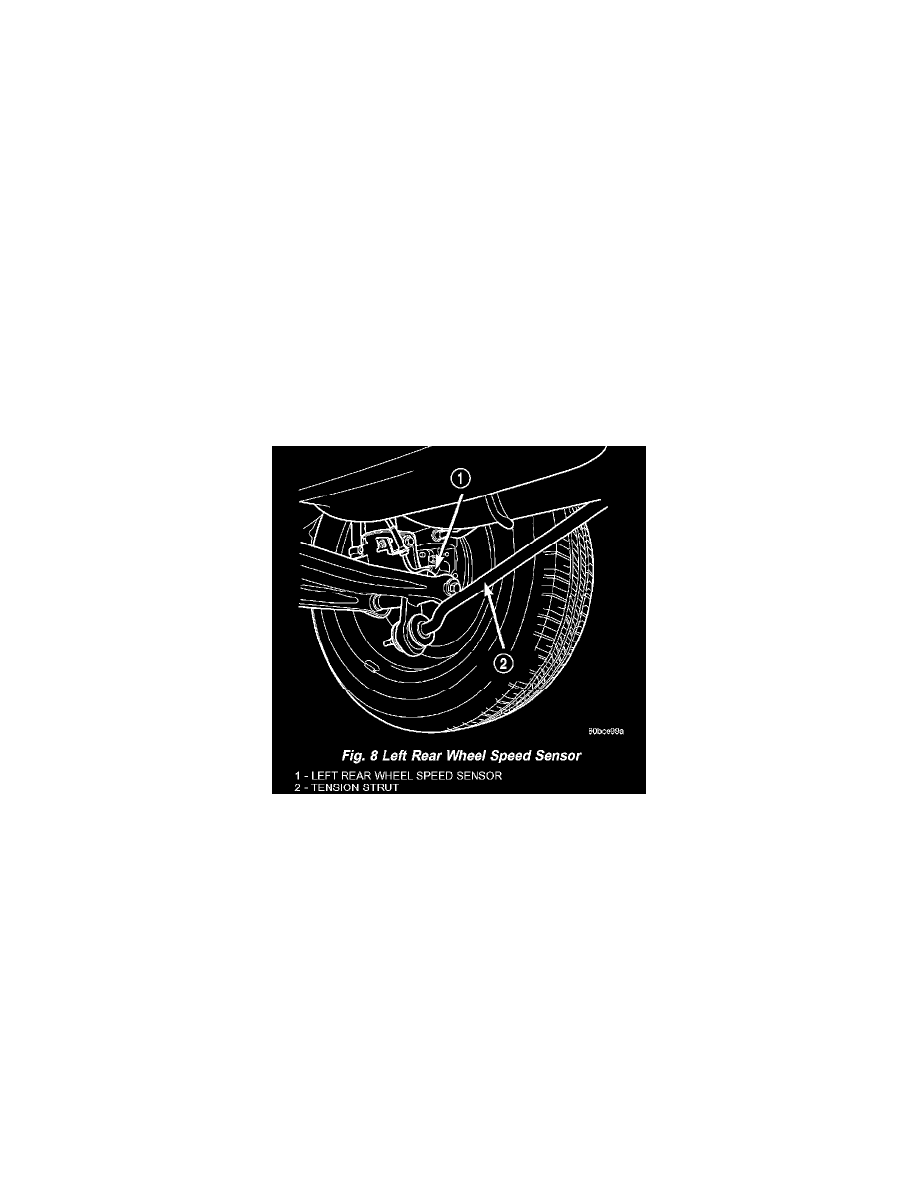SRT-4 L4-2.4L Turbo VIN S (2004)

WSS air gaps are not adjustable. The initial factory WSS air gap specification can be found in SPECIFICATIONS. Each WSS is serviced
individually. The tone wheels are serviced as part of the drive shaft.
OPERATION
The CAB sends 12 volts to power an Integrated Circuit (IC) in the sensor. The IC supplies a constant 7 mA power supply to the CAB. The
relationship of the tooth on the tone wheel to the permanent magnet in the sensor, signals the IC to enable a second 7 mA power supply. The output of
the sensor, sent to the CAB, is a DC voltage signal with changing voltage and current levels. The ground for the IC and the current sense circuit is
provided by the CAB.
When a valley of the tone wheel is aligned with the sensor, the voltage signal is approximately 0.8 volts and a constant 7 mA current is sent to the
CAB. As the tone wheel rotates, the tooth shifts the magnetic field and the IC enables a second 7 mA current source. The CAB senses a voltage signal
of approximately 1.6 volts and 14 mA. The CAB measures the amperage of the digital signal for each wheel. The resulting signal is interpreted by the
ABS CAB as the wheel speed.
Rear
REAR WHEEL SPEED SENSOR
DESCRIPTION
The Mark 20e system uses two-wire wheel speed sensors, known as active wheel speed sensors. The sensors use an electronic principle known as
magnetoresistive to help increase performance and durability. The sensors convert wheel speed into a small digital signal. A wheel speed sensor is
used at each wheel. The gear (tooth) type tone wheel serves as the trigger mechanism for each sensor. At each wheel of the vehicle there is one wheel
speed sensor and one tone wheel.
Part 1 Of 2
